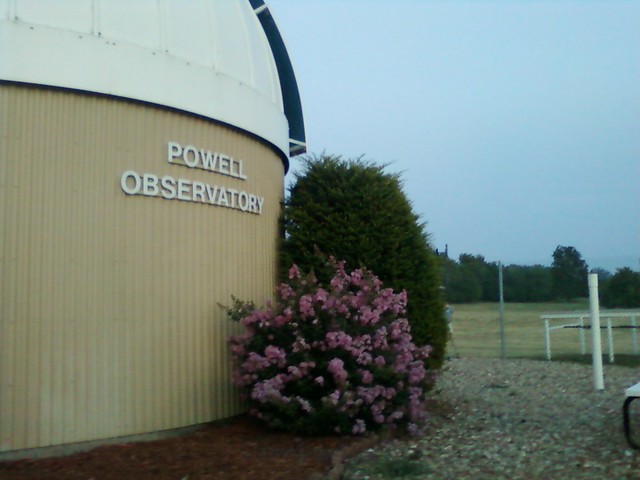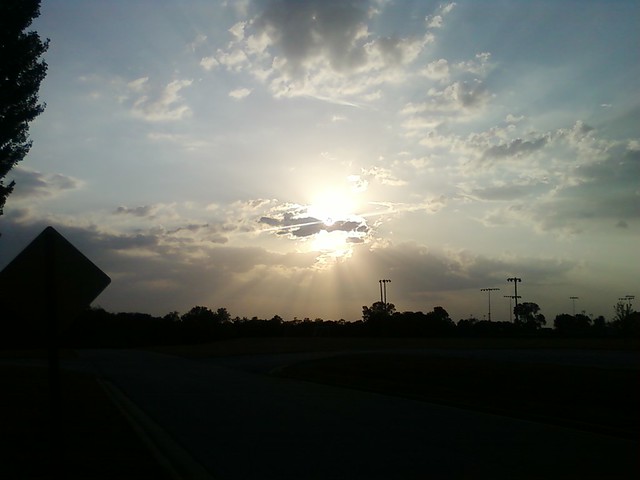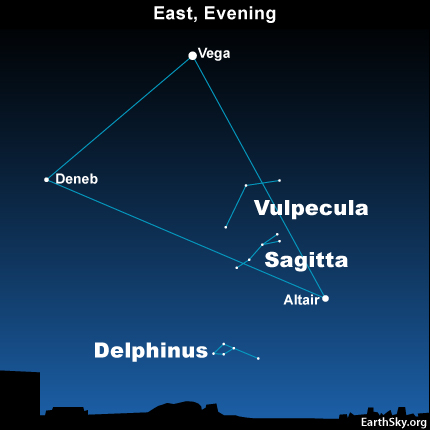 Saturday evening I headed south to Louisburg to volunteer for my second scheduled night of the 2012 Powell Observatory public season. My dad decided to tag along, to enjoy the show and help keep me awake for the long drive home. We left Lansing about twenty minutes after five and my car’s external thermometer reported 106 to 107 degrees, which has been our afternoon average for about a week now, give or take two or three degrees either way. We stopped in Bonner Springs to grab a quick, cool sandwich from Subway and returned to the highway just shortly after six o’clock. I needed to be at Powell Observatory by seven o’clock to help prepare the facility for the weekly public program and observing night.
Saturday evening I headed south to Louisburg to volunteer for my second scheduled night of the 2012 Powell Observatory public season. My dad decided to tag along, to enjoy the show and help keep me awake for the long drive home. We left Lansing about twenty minutes after five and my car’s external thermometer reported 106 to 107 degrees, which has been our afternoon average for about a week now, give or take two or three degrees either way. We stopped in Bonner Springs to grab a quick, cool sandwich from Subway and returned to the highway just shortly after six o’clock. I needed to be at Powell Observatory by seven o’clock to help prepare the facility for the weekly public program and observing night.
As we approached Louisburg from the north, I noticed a definite increase in the wind, so much so that my car was jostled several times. At the same time, I noticed a significant drop in the external temperature. By the time I exited US-69, the thermometer read 92 degrees, and was still falling. Except for early mornings the past couple of weeks, I had not seen or felt such low temperatures while the sun still shone. I pulled into the west observing field parking area and realized I was again the first person to arrive. Since the temperature had dropped, I turned off the car and opened all the windows. The breeze felt incredibly refreshing.
My team leader arrived within a few minutes and I received my Powell Observatory ‘Staff’ T-shirt, which I changed into as soon as the building was unlocked. I helped setup the class room for the program, ‘Sounds of Space.’ Another ASKC member arrived and setup his ten-inch Dobsonian for solar observing and I caught a glimpse of some great sunspots before our public guests began arriving. The clouds provided some dramatic solar observing situations.

I repeated my role as gatekeeper and accepted donations from the public and queried them for their ZIP codes to record for future grant petitions. The first group of twenty-five guests began the ‘Sounds of Space’ program at 8:30 p.m., but I soon had at least that many waiting for the second showing. At one point as I sat waiting for more guests to arrive, what I thought was a stray dog wandered into the observing field, soon followed by three horses, two with riders and a third colt between them. They trotted across the field to the west, with the dog trailing after, riding off into the sunset … literally.

As the sky continued to darken, despite a few wispy clouds, we opened the dome so those waiting for the next program could observe Saturn and a globular cluster found in the constellation Scorpius. I didn’t get a chance to look at the cluster through the 30-inch scope, but I believe they looked at M4, which is near the bright star Antares.
We ended up having nearly ninety public guests Saturday evening and ran a third showing of our program. After the last two guests had left the dome a bit after eleven o’clock, I quickly snuck a peak at the Ring Nebula in the constellation Lyra, one of the  Messier Objects I’ve been trying go get a glimpse of for quite some time. Lyra is also home to the very bright star Vega, one of the three stars that form the Summer Triangle.
Messier Objects I’ve been trying go get a glimpse of for quite some time. Lyra is also home to the very bright star Vega, one of the three stars that form the Summer Triangle.
As the final guests drove away, my team members and I began cleaning the building and storing chairs, tables and other items for the next Saturday. I signed myself out of the Observatory at 11:35 and gathered up my dad for the long drive home. He related information he’d gleaned from another team members about various types of Dobsonian telescopes and helped keep me alert as we sped north towards Leavenworth County.
Next week, we present a program on ‘Our Amazing Moon’ and the following week we’ll pose the question ‘Is There Life Out There?’ We look forward to showing you the astronomical sights (and sounds).
Until then, Keep Looking Up!

